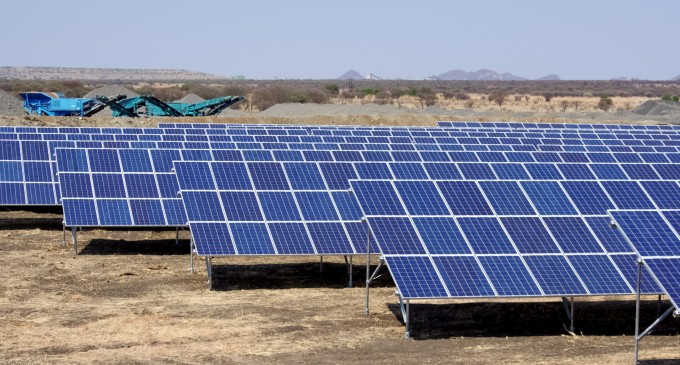The genset industry reacts to growing hybrid markets with a new approach that overcomes limitations of traditional gensets and reduces operating costs for mining companies.
Munich/Copenhagen, October 2015 – Gensets are typically optimized for efficient operation at their optimal load points. In so-called solar–diesel hybrid applications, gensets balance the intermittencies from the solar plant – for example, when clouds shade the PV array. An attractive target for solar–diesel hybrid plants is the mining industry as power consumption is usually high and mines are typically in remote locations with high costs for diesel and for transport of diesel.
As the future market potential of solar–diesel hybrid solutions has become more explicit, the diesel genset industry reacts and has launched a first solution, which is specifically optimized for balancing solar plants. Danvest has introduced its Power Box solution with either CAT or Cummins engines inside. The traditional gensets are modified in a way so that they can run in low-load and operate in a reverse mode whilst hardly consuming any diesel, but with the full ability to respond quickly to output changes from the PV array or to changes in demand. On sunny days, penetration of the PV system can reach 100% while the diesel consumption is almost zero. At night, when the PV plant does not generate electricity, the low-load diesel gensets are run as normal diesel gensets and power the mine.
“Danvest low-load generators have been used in combination with wind turbines for years. As the solar–diesel market receives more attention than the wind–diesel market at this moment, we have adapted our field-tested solution for this very dynamic market segment,” explains Thomas Qvist Vestesen, CEO of Danvest Energy A/S.
The new study “Low-load Gensets for Solar–diesel Hybrid Plants in the Mining Industry” analyses the technical and strategic fit of low-load gensets for solar–diesel hybrid applications. It integrates several tests and verifies market-related questions through 21 expert interviews. In addition, several business cases are simulated.
The study shows that low-load gensets almost double the solar penetration rate in solar–diesel hybrid systems and that low-load diesel gensets are more efficient in hybrid plants, all this without the use of batteries or other storage systems. This straightforward solution has the potential to considerably lower the operational costs of mines. The fast spinning reserve of the low-load diesel systems in all its operations modes ensures the power supply in any case of variation of demand or of PV production losses, for example from shading.
“The demand for raw materials has slowed down and prices have decreased recently. The mining industry is facing substantial challenges. Reducing the costs of operations such as energy expenditures has become an important competitive factor. One of the game changers could be low-load diesel hybrid power plants giving maximal room to locally produced inexpensive solar and/or wind energy. Even at the current low oil prices, optimized hybrid technologies normally beat the current conventional diesel based electricity prices. The additional investment including the PV system has usually a pay-off period in the range of 4 to 7 years,” summarizes Dr. Thomas Hillig, CEO of THEnergy. “We see a big market potential for low-load gensets – especially in the mining industry as power demand is high and the market develops new dynamics – several companies report large pipelines of upcoming projects.”

